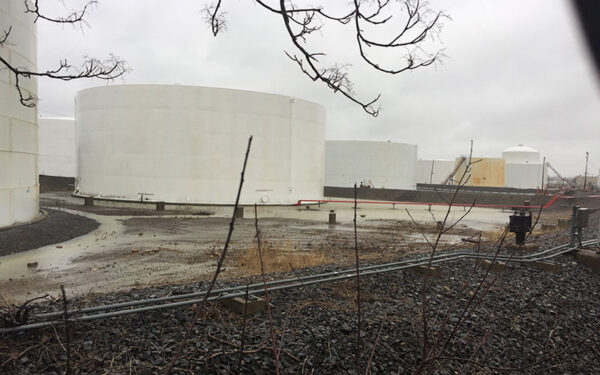
Connecticut State House. Photo via Shutterstock.
By Caitlin Peale Sloan and Max Greene
Last month, CLF reported on Connecticut’s new Comprehensive Energy Strategy, which is designed to help the state meet its clean energy goals. The plan would lock in Connecticut’s addiction to climate-damaging fossil fuels – a bad idea when Connecticut is already floundering on its climate commitments and urgently needs to step away from fossil fuels to avoid the worst effects of climate change.
The plan is too big on dirty gas and too short on clean energy. Instead, as we told Connecticut lawmakers yesterday, the state needs to put out a new plan with a greater focus on renewable energy like wind and solar, an eye toward energy efficiency, and a stronger push for getting electric cars and trucks on the road.
Connecticut Needs to Support Renewable Energy
Digging into the strategy, we found some troubling proposals that would limit small renewable-energy projects.
There’s no reason to limit these smaller projects, such as solar arrays built over parking lots or at the edge of farmers’ fields. These small projects can bring in extra cash for businesses, reduce energy use for owners, and offer other benefits that Connecticut didn’t account for in its strategy.
Not only do small renewable-energy projects reduce overall energy costs, but this kind of project can provide unique benefits. For example, it’s hard for southern New England’s farmers to compete, given the region’s dense development and expensive land. That’s why, when I attended a meeting about the strategy in New Britain earlier this month, I heard both Connecticut’s Farm-Energy Program Coordinator and the Executive Director of the Connecticut Farm Bureau explain that limiting small renewable energy projects would not only hurt farmers, but also lead to farmland loss.
At a time when we need to switch to clean energy and conserve farmland, supporting small renewable-energy projects is a no-brainer. Connecticut’s energy strategy should reflect that.
Connecticut Needs to Move Away from Fossil Fuels
The strategy also calls for people to heat their homes with natural gas. However, it will be impossible for Connecticut to meet its climate goals if the state continues to rely on – and expand – its dependence on this dirty fossil fuel.
If anything, Connecticut needs to shift its focus to reducing methane leaks in existing gas infrastructure, starting with the biggest, most damaging leaks. These leaks not only damage our climate, but they’re expensive. And, of course, they’re a safety hazard.
Indeed, last month’s meeting highlighted a rare point of agreement between CLF and the fossil fuel industry, as a representative from the Connecticut Energy Marketers Association exhorted Connecticut’s Department of Energy and Environmental Protection (DEEP) to account for natural gas pipeline leaks when considering whether natural gas is actually clean. (Spoiler alert: it’s not.)
Ultimately, the state won’t need new natural gas infrastructure like pipelines and soon-to-be-outdated gas heating systems if it focuses instead on true clean energy, including more small-scale projects as recommended above.
Connecticut Needs a Concrete Plan to Convert to Electric Vehicles
Finally, the strategy acknowledges how important electric cars and trucks will be as we clean up our energy and our transportation systems, which together account for 40% of Connecticut’s carbon pollution. Only electric vehicles have the potential to run on 100% renewable energy. They can even serve as backup batteries to our power grid, helping it handle the air conditioners that blast on the hottest days of the year.
But what the strategy does not do is set aggressive, targeted policies to encourage all of us drivers to transition from gasoline-powered cars to electric vehicles. Connecticut has committed to putting 150,000 electric vehicles on its roadways by 2025; to honor that commitment it must move fast (only about 6,000 electric cars are on the roads now). What the strategy calls for — an “EV (Electric Vehicle) Roadmap” — is a fine first step, but is not enough.
Back to the Drawing Board
All in all, the strategy can and must be more ambitious. Connecticut is one of four New England states that have joined the U.S. Climate Alliance, pledging to uphold the climate goals laid out in the 2015 Paris Climate Accord. Its current energy strategy is no way to meet those commitments.
We urge the strategy’s authors at the Department of Energy and Environmental Protection to carefully consider our feedback and come back with a stronger plan — a new strategy that will establish Connecticut as a true leader in the transition to a clean energy future.



